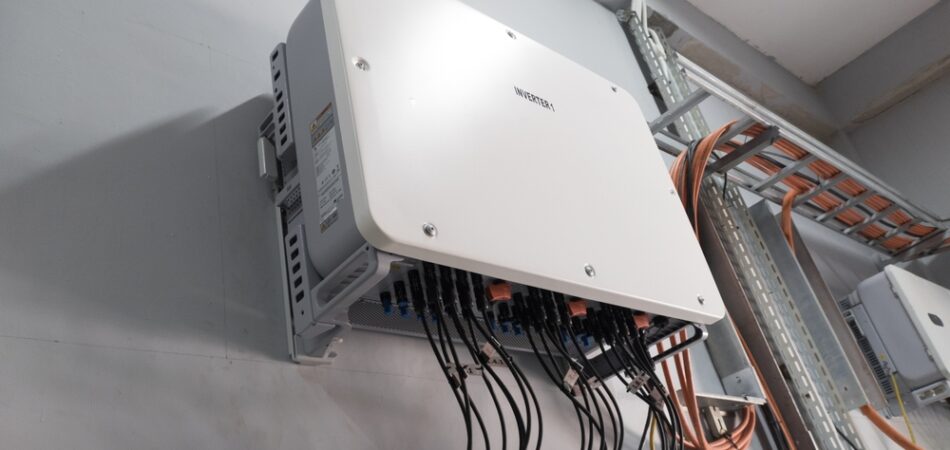
A crucial component that bridges the gap between sunlight and usable electricity is the solar inverter. Understanding what a solar inverter does and how it operates is essential for anyone looking to harness solar power efficiently. This article delves into the functionalities of a solar inverter, its role in a photovoltaic (PV) system, and the intricate process by which it converts solar energy into usable electricity.
The Role of a Solar Inverter
A solar inverter is a device that converts the direct current (DC) electricity generated by solar panels into alternating current (AC) electricity. AC electricity is the standard form of electricity used in homes and businesses, making it compatible with the power grid and electrical appliances. This conversion is necessary because solar panels produce DC electricity directly from sunlight, but most household devices and the grid operate on AC electricity.
Conversion Process
The process begins with sunlight striking the solar panels, which are made up of photovoltaic cells. These cells generate DC electricity when exposed to sunlight. The DC electricity generated by the solar panels then flows into the solar inverter.
Solar Inverter Components
Inside the solar inverter, several key components facilitate the conversion process:
- Converter: The converter within the solar inverter transforms the variable DC output from the solar panels into a stable DC current.
- Inverter: The heart of the solar inverter is the inverter itself, which converts the stable DC current into AC electricity. This is achieved through a complex electronic switching process.
- Controller: The controller manages and optimizes the operation of the inverter to ensure maximum efficiency and reliability.
Types of Solar Inverters
There are several types of solar inverters, each suited for different applications and system sizes:
- String Inverters: These are commonly used in residential and small commercial solar installations. They connect multiple solar panels in series (a string) and convert the DC electricity from the entire string into AC electricity.
- Microinverters: Microinverters are installed on each individual solar panel, converting DC to AC electricity right at the panel level. They offer advantages in terms of system flexibility and efficiency, particularly in installations where shading or panel orientation varies.
- Central Inverters: Typically used in large-scale solar installations, central inverters are designed to handle high power outputs from numerous solar panels connected in parallel. They are more cost-effective for large systems but can be less efficient in situations where shading or panel mismatch occurs.
Solar Inverter Efficiency
Efficiency is a critical factor when considering solar inverters. The efficiency of a solar inverter refers to how much of the DC electricity from the solar panels is successfully converted into usable AC electricity. High-efficiency inverters minimize energy losses and maximize the amount of electricity that can be used or exported to the grid.
Monitoring and Optimization
Many modern solar inverters come equipped with monitoring systems that allow users to track the performance of their solar energy system in real-time. These systems provide valuable data on energy production, efficiency levels, and any issues that may arise, such as panel malfunctions or shading.
Importance of Proper Installation
Proper installation of a solar inverter is crucial to ensure optimal performance and safety of the entire solar energy system. Qualified solar installers follow specific guidelines for placement, wiring, and grounding to maximize efficiency and longevity.
Maintenance and Longevity
Solar inverters are generally designed to be durable and require minimal maintenance over their lifespan, which can range from 10 to 25 years depending on the type and quality of the inverter. Routine inspections and occasional cleaning of the solar panels can help maintain optimal performance.
Conclusion
A solar inverter plays a pivotal role in converting the DC electricity generated by solar panels into the AC electricity that powers homes and businesses. Understanding how a solar inverter works—from the conversion process to its components and types—provides insight into the efficiency and effectiveness of solar energy systems. As renewable energy continues to grow in importance, the role of solar inverters in enabling the widespread adoption of solar power cannot be overstated.
Need a Solar Company in Lake Havasu City, AZ?
Mohave Solar is a complete solar design and installation company. From swimming pool solar and solar power for your house to advanced battery storage systems, we can design a system to suit your needs. We are locally owned and operated from Lake Havasu City, Arizona. We cover all of Mohave and La Paz County. Our design and installation team has over thirty years of experience and we have thousands of satisfied customers. We take pride in our work and are licensed, bonded and insured. Contact us today to learn more about what we can do for you!
